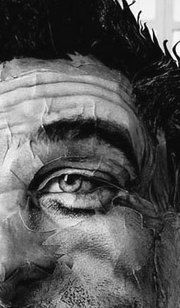 Last Thursday I went to a meeting of the Open Shelf Book Club at the Museum of Contemporary Art | Denver. Jasper de Beijer was discussing books and media that have influenced his work, now on view in the museum's Paper Works Gallery. The book he selected for our discussion next time is Journey to the End of the Night by Louis-Ferdinand Celine... he talked about the one-dimensional thinking it exposes and mentioned that it is a somewhat difficult read. He said it was like "staring into the abyss of the soul..."
Last Thursday I went to a meeting of the Open Shelf Book Club at the Museum of Contemporary Art | Denver. Jasper de Beijer was discussing books and media that have influenced his work, now on view in the museum's Paper Works Gallery. The book he selected for our discussion next time is Journey to the End of the Night by Louis-Ferdinand Celine... he talked about the one-dimensional thinking it exposes and mentioned that it is a somewhat difficult read. He said it was like "staring into the abyss of the soul..."
Several of us went up to the gallery afterwards and saw the show. His work is amazing. It was great to be able to ask him questions about his process. He builds representations of something that interests him and that he has studied -- using digital imagery, modelling, and some collage techniques -- and then photographs the models. Some of his models are on display along with a lot of the photographs. I was most taken with a series of 3-dimensional heads that he had collaged imagery onto -- busts of men who had suffered shell shock in WWI. The patched-together, collaged, 3D heads are quite interesting themselves but the photographic treatment flattens the imagery and really conveys their wounds and emptiness. The photo at top left is a detail from one of the heads to show how the imagery is joined... he said he mostly uses spray adhesive. If you click here, you can see his body of work and the larger image this detail comes from.
He talked a lot about our dis-association with photographed images from history. "...de Beijer has been reconstructing imagery that has become autonomous in the course of history, using existing sources to create a new reality." So then, what is "real"?
